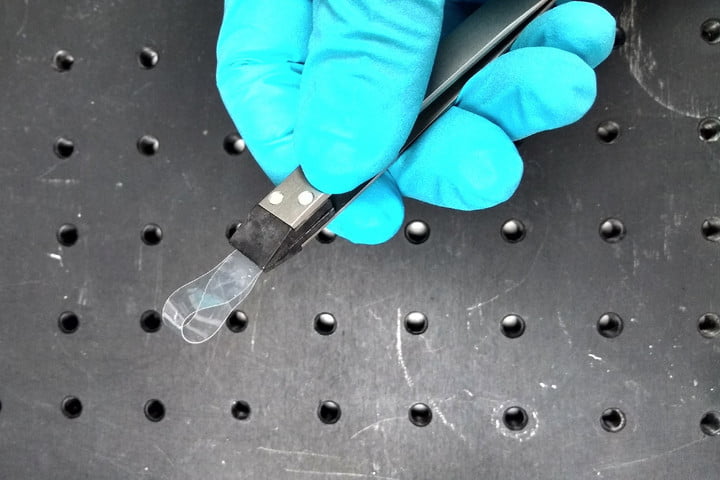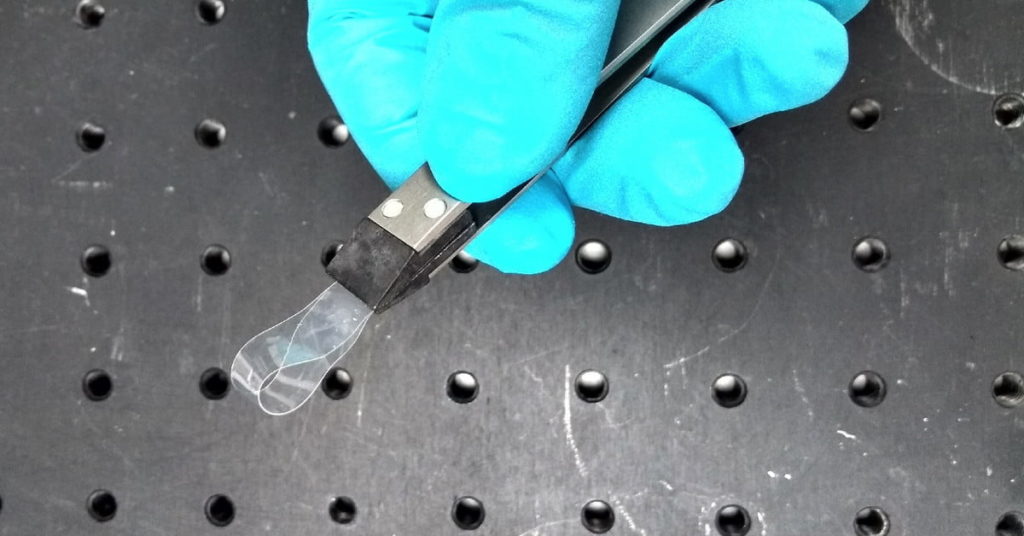This Exotic New Material Somehow Gets Thicker When Stretched

Stretch just about any material and what happens to it? It gets thinner, of course. It turns out that this isn’t a universal rule, however. Scientists at the U.K.’s University of Leeds have discovered a new synthetic material which actually gets thicker the more it’s stretched. Referred to as a liquid crystal elastomer, it’s composed of the same liquid crystal material most commonly seen in flat screen monitors and television displays.
“This behavior of increasing in thickness as a material is stretched is known as ‘auxetic’ behavior,” Dr. Devesh Mistry from Leeds’ School of Physics and Astronomy — though soon to join the University of Colorado, Denver — told Digital Trends. “Until now, manmade auxetics require a material prepared with specific structures allowing the auxetic response. Our material does not require such structures as the behavior is inherent to the material, and is a result of molecular restructuring inside the material.”
Mistry said that the synthetic material’s unusual properties aren’t just interesting from a materials science research perspective; they also open up some intriguing real-world possibilities, ranging from medical use cases to futuristic body armor. “This is exciting as auxetics are known to have enhanced mechanical behaviors such as shock absorbance and tear resistance,” he continued. “[Because of this,] these simpler materials have a great number of potential applications from biomedical devices to flexible electronics.”
Some examples of other auxetic materials include cat skin, tendons in the human body, and the protective layer in mussel shells. Researchers have been trying to replicate these qualities synthetically for decades, but until the present day, they’ve only been able to do it using costly, time-consuming processes. Further, while some of the auxetic properties of natural materials are carried across to these previous synthetics, the lab-made materials have proven disappointingly weak and porous in some cases.
As a result, this new research — based around a synthetic molecular version of auxetic materials — is an exciting step forward. Don’t expect it to roll out as a finished product any time soon, though. “One of the next key things to understand is what the molecular processes are that are driving this behavior,” Mistry said. “Once we understand this, we will be able to tune the behavior for specific applications and design new materials for devices.”
A paper describing the work was recently published in the journal Nature Communications.




